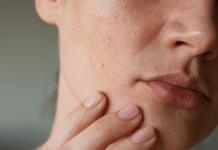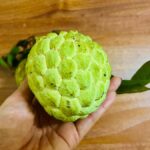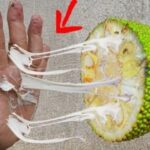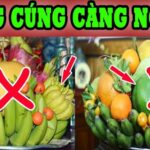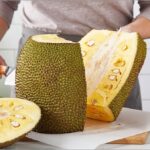Jackfruit is a popular fruit with an extended harvest season due to the introduction of various imported varieties. When transporting jackfruit over long distances, unripe fruits are typically harvested to facilitate easier handling and prevent premature ripening during transit.
Jackfruit is characterized by its thick, spiky skin, making it challenging to assess the quality of the flesh within. Traditionally, a common practice was to “test” the fruit by cutting or gouging a small portion to determine its ripeness and flavor.
Why is the top of the jackfruit gouged and covered with a white substance?
Consumers often express concern upon seeing jackfruit with a gouge on the top coated with a white substance. Some worry that it might be harmful chemicals used to induce ripening or preserve the fruit.
However, traders reveal that due to the difficulty in assessing the quality of jackfruit, they employ the “testing” method. This involves cutting a small portion at the top of the fruit to check for the amount of fiber and the size of the bulbs. This practice helps in evaluating the fruit without penetrating too deeply into its body.
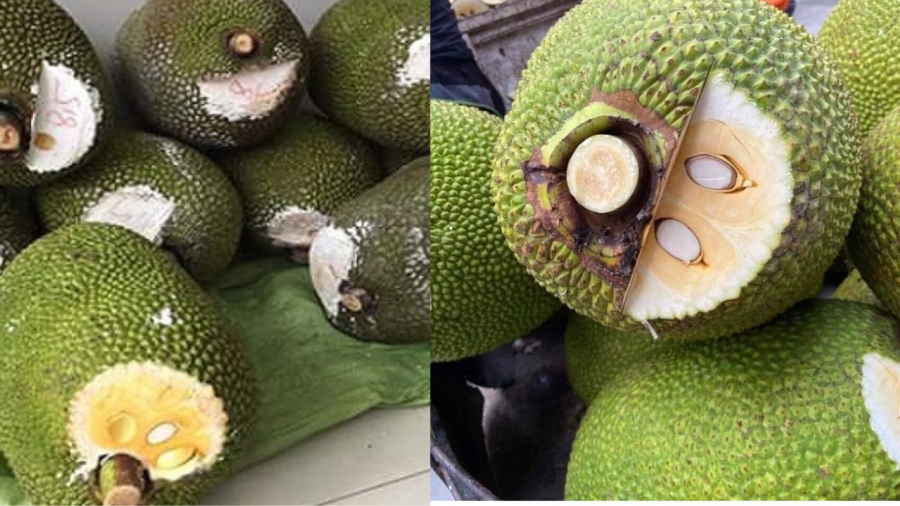
Jackfruit with a Gouged and White-Coated Top
The exposed area makes the jackfruit susceptible to bacterial and insect infestation, leading to faster spoilage or over-ripening. Therefore, applying a disinfectant is necessary to protect the fruit. Traditionally, lime (calcium hydroxide) was used as a disinfectant, and it is still practiced today by some vendors.
Similar to the practice of coating the navel of pomelos with lime to prevent insect infestation through the natural openings.
Hence, after “testing” the jackfruit, lime is applied as a protective measure. This is especially relevant for the commonly cultivated Thai jackfruit variety, which tends to have issues with internal black fiber and rot. This practice explains why large wholesale markets often display jackfruits with gouged and lime-coated tops.
In contrast, jackfruits from smaller home gardens, sold directly by the growers, typically do not undergo this treatment. Historically, cultivation practices also differed, with fewer instances of natural insect infestations in the past compared to the present.
As quoted on VTV.vn, PGS.TS Nguyen Duy Thinh, a former lecturer at the Institute of Biology and Food Technology (Hanoi University of Science and Technology), also confirms that the white substance is lime, as it is an inexpensive and effective disinfectant to prevent bacterial infiltration.
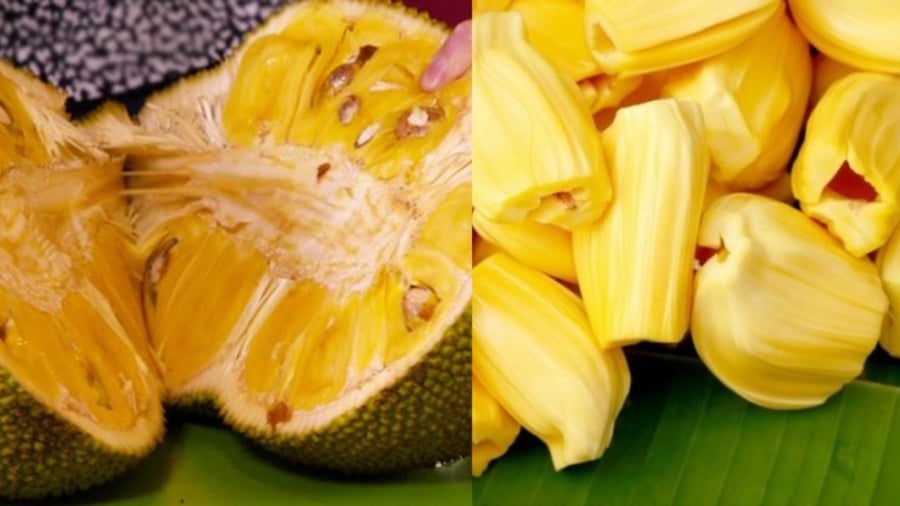
Jackfruit: A Fruit That Requires “Testing” for Quality Assessment
Tips for Choosing Ripe and Delicious Jackfruit
Jackfruits with gouged and lime-coated tops typically come from large commercial orchards. In contrast, jackfruits from small-scale growers who sell fruits from their own trees rarely exhibit this feature. Therefore, this characteristic can help you distinguish between commercially grown and homegrown jackfruits.
When selecting a jackfruit, pay attention to the spikes: Sharp, dense, and closely spaced spikes indicate an unripe or inferior fruit. Look for jackfruits with flatter spikes that are spaced further apart.
A ripe jackfruit will sound hollow when thumped, and you may also notice a distinct aroma, indicating its ripeness.
The Ultimate Hack to Remove Sticky Sap from Your Hands After Enjoying a Delicious Mangosteen
Eating jackfruit can be a messy affair, with its sticky latex sap leaving a residue on your hands. This can be a real turn-off for those who enjoy the sweet, juicy fruit. So, how can we overcome this issue and enjoy the fruit without the hassle?
The Top 3 Delicious and Sweet Fruits That Are a No-Go for Ancestral Altars
The ancient customs and traditions surrounding fruit offerings on ancestral altars during festive occasions are intriguing. It is fascinating to discover that not all fruits are deemed suitable for this purpose. The three delicious, sweet, and visually appealing fruits listed below are traditionally avoided and not placed on altars during rituals.

